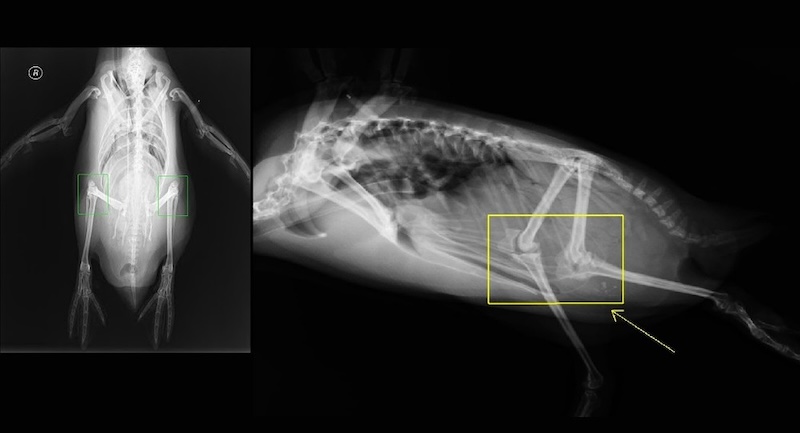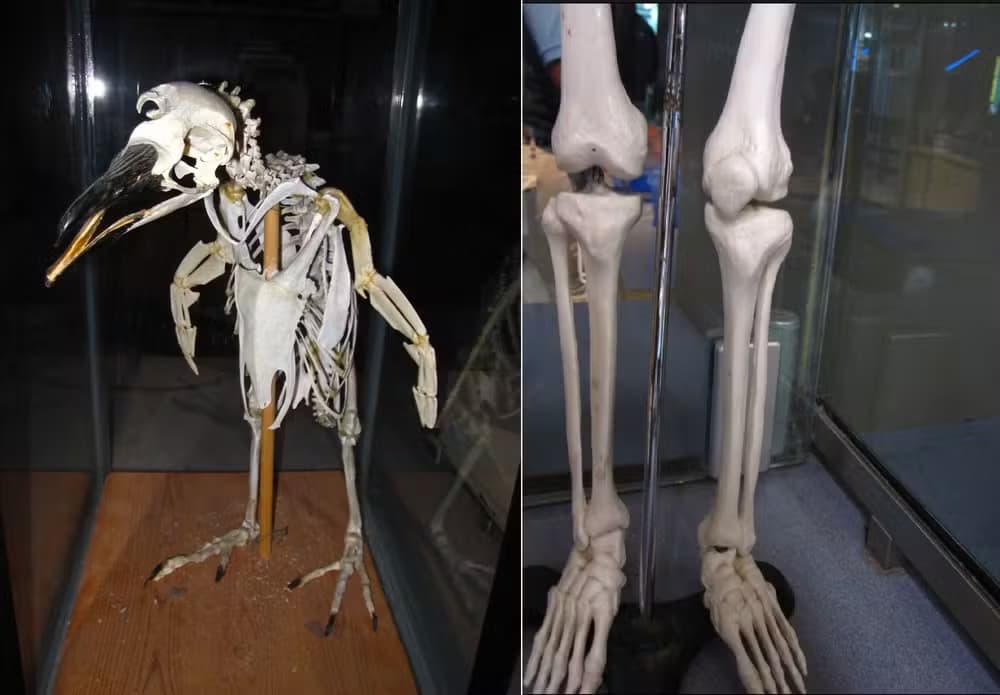There’s a question you might not have realized you had, but it’s one that many people are curious about—and it’s been gaining traction online. Let’s settle it once and for all: do penguins have knees?
The short answer is yes, penguins do have knees. Their legs include a femur, tibia, and fibula, just like ours. In fact, when it comes to bone structure, penguins are more similar to us than to other birds.
Let’s dive into the biology of it all—and as a bonus, we’ll explore more about the morphology of these fascinating birds.
What Are Penguin Knees Like?

Penguins’ legs appear short because their skin conceals much of their bones, including their knees. Beneath a dense layer of feathers and skin, they have a femur, tibia, and fibula, arranged similarly to the bones in your leg. If this sounds confusing, the X-ray images below should help clarify.
Because of this, penguins have a distinctive way of walking. Imagine wearing an oversized shirt pulled down over your knees, leaving only your ankles and feet visible. If your bones were structured like this, you’d also walk with a “waddle.”
While it may look inefficient, this swaying gait is actually the most energy-efficient way for penguins to walk. Due to their short legs, they take smaller, quicker steps, which require their muscles to work harder. The side-to-side sway helps them use the momentum from one step to power the next, conserving energy.
Swimming Champions
You might be wondering: if penguins’ legs make it difficult to walk on land, why are they like this? Well, penguins are designed for swimming, not walking.
Penguins’ bodies are streamlined to move efficiently through water—similar to how an airplane or bird’s body is aerodynamic for cutting through air with minimal resistance. For penguins, long legs would create unnecessary drag, making swimming more difficult and energetically costly.
Since penguins spend about 75% of their time in the water, it’s logical that their bodies are adapted for swimming rather than walking. Their torpedo-shaped bodies, with cylindrical torsos, small heads, short legs with webbed feet, and short, wide wings, are all designed to enhance their swimming ability, allowing them to move at high speeds underwater.
These adaptations are part of what sets penguins apart from other birds.
If you recall your biology classes, you might remember that most birds have pneumatic bones—porous and hollow, capable of storing air. This makes their skeletons lighter, which is crucial for flight.
However, since penguins need to swim rather than fly, they can’t have light bones, or they would float. Instead, their bones are solid and heavy, helping them stay submerged while they hunt for fish.
The Knees of Birds

Another key difference is in penguins’ feet. Unlike other birds, which walk on their toes as if on tiptoe, penguins walk with the soles of their feet fully supported on the ground.
This distinction helps clarify a common misconception: birds’ knees don’t bend backward. You may have seen a flamingo, heron, or another long-legged bird and noticed a joint that appears to bend backward.
Since this joint is mid-leg, it’s often mistaken for a knee, but it’s actually the bird’s ankle.
As mentioned, birds’ legs have the same bone structure as ours—femur, tibia, and fibula. In birds, the femur (thigh bone) is typically shorter, so the knees are tucked up against the body, hidden beneath the wings and feathers.
What is sometimes mistaken for the tibia and fibula is the tarsometatarsus—a unique fusion of ankle and foot bones found only in birds and some dinosaurs.
Most birds, then, walk on their toes. Since their feet extend to the middle of their legs, what looks like a backward-bending knee is their ankle.
So yes, penguins do have knees. They’re just hidden within the body to aid in swimming.


